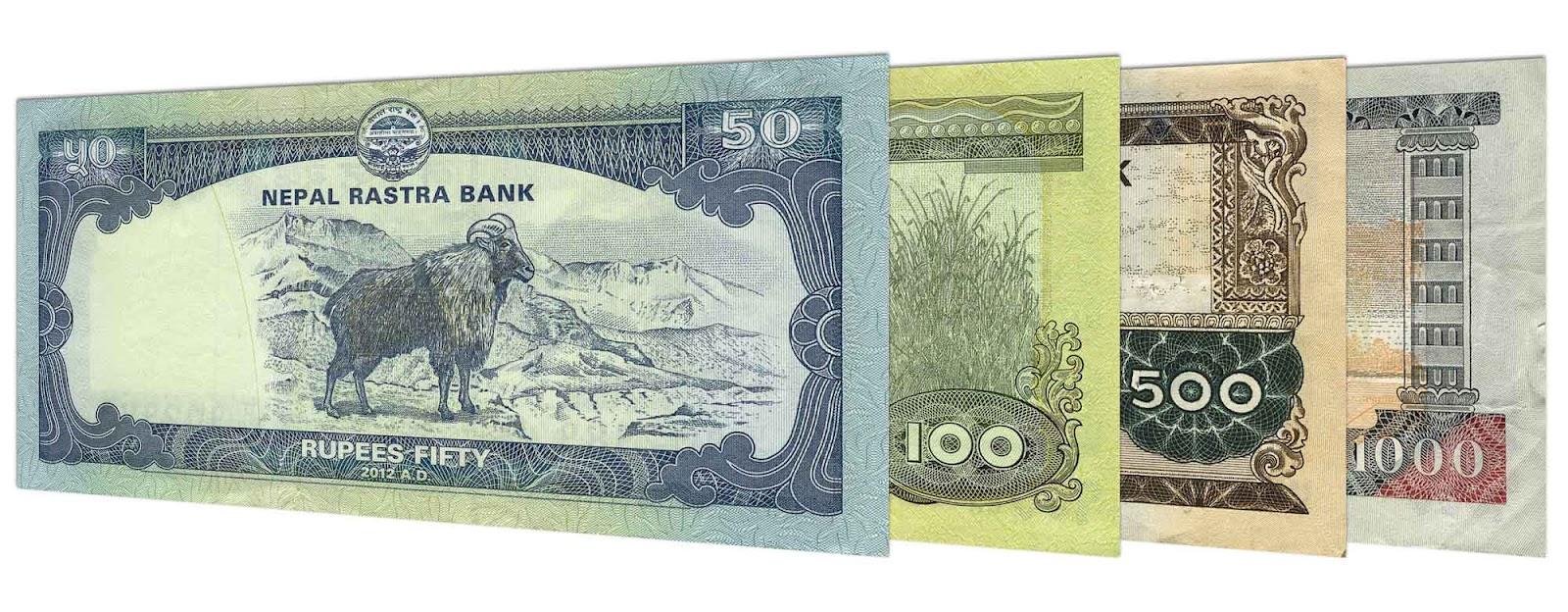Money, the driving force behind the world's economic transactions, has a captivating allure. It infinitely shapes societies, ignites revolutions, and fuels dreams of prosperity. As humanity ponders the origins of money, questions arise.
How did this intangible concept come into existence? What was the earliest form of currency?
Delving into the history of Nepal's coins and currency unveils a mesmerizing journey through time.
From the barter system to the introduction of cash, the transition to paper money, and the diverse forms of currency, each chapter narrates an enthralling tale of innovation, necessity, and the human pursuit of economic exchange.
The Evolution of Money: From Barter to Coins
In the grand tapestry of human civilization, the inception of trade marked a significant turning point. As communities evolved and interactions between distant lands grew, the need for a standardized form of payment became apparent.
The age-old practice of bartering, though functional to some extent, was fraught with challenges.
This article embarks on a journey through time, tracing the fascinating evolution of money from the primitive barter system to the introduction of coins.
Barter System: Early Trade and Valuable Exchanges
In ancient history, trade initially relied on the barter system. People exchanged goods and services directly, relying on mutual needs and wants.

Picture a world where a basket of grain was traded for a slab of meat or a jar of honey for a pair of handmade sandals. Valuable items such as lambskin, rhino horns, and even the teeth of wild animals became mediums of exchange, representing wealth and prosperity.
However, this decentralized and unstandardized trade method posed numerous challenges, especially in tracking transactions and accounting.
The Birth of Coins: Remedying the Need for Standardization
To overcome the barter system's shortcomings, humankind turned to metal money, heralding a new era of monetary exchange. The medieval period witnessed the establishment and widespread use of coins.
This circular piece of metal, often crafted from precious materials, revolutionized commerce.
Notably, the first metal coin in recorded history was discovered in the ancient city of Ephesus, nestled within the realm of the Greek civilization. Dating back to 650 and 625 BC, this artefact provided a glimpse into the early adoption of standardized currency.
China and the Advent of Paper Money
While coins served as a reliable medium of exchange in various civilizations, it was in China that the concept of paper money truly took root.
Approximately 1400 years ago, in the bustling capital of Chengdu in the province of Sichuan, the first known banknote, called Jiaozo, emerged. This revolutionary form of promissory banknote represented a pledge of value backed by a trustworthy authority.
Numismatists who study and collect currency regard the Jiaoza as the first paper money in recorded history.
History of Money in Nepal: From Mananka to Paper
Nestled amidst the majestic Himalayas, the history of Money in Nepal traces the evolution of currency from the earliest coins to the advent of paper money.
While there has been some debate regarding the first coins used in Nepal, the rich drapery of monetary systems that emerged during different periods offers a fascinating glimpse into Nepal's economic history.
Introduction of Money in Nepal: The Maurya and Kushan Empires
During the reign of the Maurya Empire, spanning from 322 BCE to 180 BCE, and later the Kushan Empire, which thrived for three centuries, from the 2nd century BC to the 3rd century AD, money entered Nepal.
These ancient empires, known for their expansive territories and cultural influence, brought with them silver-punched mark coins that circulated in the region.
The Licchavi Era: Unveiling the "Mananka"
In the 5th century, Nepal witnessed the glorious Licchavi Era, characterized by its rich cultural heritage and advancements.
It was during this period that the first actual monetary coins were introduced. Contrary to popular belief, the first coin used in Nepal was not the Mananka, but rather, it was after the reign of King Mandeva that the "Mananka" coins were minted.
These coins held significant historical value and symbolized the beginning of a structured monetary system in Nepal.
The Malla Period: Metal Money and Systemized Denominations
Following the Licchavi Era, Nepal entered the prosperous Malla Period, known for its artistic and architectural achievements.
The Malla rulers introduced various denominations, which systemized the monetary terms in Nepal.
Coins denominated as 2 Mohur, 1 Mohur, one and a half Skikka, Sukka, Tinnani, Anni, Adhani, Paisa, and Dam were minted, each representing a specific value and serving as a medium of exchange.
The transition from Traditional Currency to Paper Money in Nepal
Shedding light on the transition of Nepal from its traditional currency to the slim and squeaky paper money is a journey of challenges faced and the strategic decisions made by the Nepalese government to ensure stability and progress.
From Coins to Rupees: Nepal's Currency Transformation
For centuries, metal coins reigned supreme as Nepal's primary exchange medium. However, in 1932, a significant transformation occurred when Nepal introduced the rupee, replacing the silver Mohar at a fixed exchange rate of 2 Mohar to 1 rupee.
This move aimed to streamline and align Nepal's monetary system with international standards.
Challenges and Indian Currency Influx
Until 1945, metal coins remained the sole currency in circulation in Nepal. However, during the 1940s, the free circulation and use of Indian coins created a predicament for the Nepalese people.
The open border, inadequate communication systems, and widespread illiteracy compounded the challenges of dual monetary exchange.
The situation was further exacerbated when the Nepalese government was compelled to accept Indian currency, leading to fluctuating exchange rates and a decline in the value of the money.
Debased Coins and the Nation's Economic Struggles
As a consequence of accepting Indian currency, the pure silver coins of Nepal were gradually exchanged for debased coins from India. This economic shift resulted in a national income deficit, posing strategic implications for Nepal's financial stability.
The government realized the need for a more robust and reliable monetary system to safeguard the nation's economic well-being.
The Introduction of Nepali Banknotes: A Strategic Move
The government of Nepal took a decisive step to address the challenges posed by debased coins and the fluctuating value of the currency. This led to the official introduction of the first Nepali banknotes.
In the upcoming segment, we will delve deeper into the historical details and significance of these banknotes, which marked a turning point in Nepal's economic landscape.
The First Nepali Note: Origin and Details
The introduction of the first Nepali Note stands as a significant milestone in the monetary history of Nepal. Let's learn about the origin and intricate details of the historical note, shedding light on its head, issuance, design, and the unique elements that adorned its surface.
Issued by King Tribhuvan: A Symbol of Independence
On the 14th of October, 1945 AD, corresponding to the 1st of Ashwin, 2002 BS (Bikram Samvat), King Tribhuvan of Nepal played a pivotal role in unveiling the country's first banknotes.
These notes were printed at the India Security Press, a renowned printing company known for its expertise in security printing. The Indian Security Press, located in Nashik, Maharastra, has a history dating back to 1928 and has been instrumental in printing various Indian currency notes.
Denominations and Design: The Magnificence of Moru Notes
The inaugural Nepali banknotes, known as Moru, were introduced in 5, 10, and 100 denominations.
What made these notes truly captivating was their vibrant colours and intricate embellishments. The borders featured exquisite depictions of birds, snakes, and other animals, creating a visual spectacle.
A Glimpse into the 5 Moru Note
One of the noteworthy banknotes of this era was the 5 Moru note.
In a velvety brown hue, the note displayed a portrait of King Tribhuvan on the front, positioned to the right.
Turning to the rear, one would behold a vivid, lush jungle scene where a majestic tiger stealthily emerged amidst lush leaves. The design was so intricately crafted that it almost appeared to bring the wildlife to life, mesmerizing the beholder.
Just below the scene, the denomination was elegantly inscribed in the Devanagari script (Moru five).
A Remarkable Decision: Animals as Value Indicators
According to officials from the Rastra Bank, it is believed that Juddha Shamsher, the Prime Minister of Nepal until 1945, desired to have his image on the banknotes.
However, King Tribhuvan himself intervened, denying this request. Consequently, the decision was intended to facilitate ease of understanding for the illiterate, as the animals served as visual indicators of the note's value.
Security Features: A Glimpse into the Past
Nepali banknotes were relatively fragile in the early days and lacked intricate security features.
However, two notable elements were incorporated to enhance their authenticity; First, each note bore a unique serial number, allowing for better tracking and identification.
Secondly, a watermark of King Tribhuvan's portrait was subtly integrated, adding a layer of security to the note.
Nepali Money through the Ages: Changes and Rendition
As time unfolded, Nepal witnessed a multitude of changes in its currency system, with over four generations of monarchs and sixteen governors leaving their mark.
Let's unfold the fascinating transformations that Nepali money has undergone, encompassing the symbols, legends, and transition from monarchy to a federal democratic republic.
The Shah Dynasty: Symbolic Representations and Decimalization
The Shah Dynasty, tracing its lineage to solar and lunar races, left an indelible imprint on Nepali coins. These coins bore the symbols of the sun and crescent, signifying their ancestral origins.
Positioned from the right and left, respectively, the sun and crescent became distinctive hallmarks of the Shah coinage.
During King Mahendra's coronation, a significant change was introduced. Coins now depicted the royal crown, accompanied by the pure Sanskrit legend "Subha Rajya Bhiseka," encrypted upon them.
Another remarkable alteration was abandoning the old Indian system of 64 paisa for a rupee, which had prevailed during the Malla period. The Shah Dynasty ushered in the decimal system, establishing 100 paisa as the new standard for a rupee.
The Conversion to Modern Weighing and Measuring Techniques
The history of Shaha coinage witnessed a remarkable shift in the weighing and measuring techniques employed.
Traditional units were replaced with modern metrics, such as grams and centimetres. This transition exemplified the Shah Dynasty's commitment to adopting contemporary standards and streamlining the monetary system.
Republic Day: The Birth of a Democratic Nepal
A momentous event in Nepal's history, Republic Day, marks the abolition of the monarchy and the establishment of a federal democratic republic.
This milestone, celebrated on May 2008, signifies the transformation of Nepal from a kingdom to a republic. It stands as a testament to the county's evolving political landscape and the aspirations of its people.
The Evolution of Banknotes: Mount Everest Takes Center Stage
In 2007, Nepal witnessed a significant change in its banknotes. The 500 rupee note, which previously featured the king's portrait, underwent a transformation.
It was replaced by a depiction of Mount Everest, the majestic peak that profoundly represents Nepal on the global stage.
Subsequently, notes of 5, 10, 20, 50, 100, and 1000 with Mount Everest and Rhodendron watermark as a prominent motif were introduced in 2008 and 2009 respectively, symbolizing the Nation's movement elevating its rich diversities and heredities.
Diverse Forms of Nepali Currency Throughout History
Nepali currency has evolved over time, showcasing a rich diversity of coins made from various materials, from steel and silver to metal and aluminium. The different forms of currency have shaped Nepal's economic landscape, from ancient kingdoms to the modern era.
The Classical Period: Licchavi Coins and Mallas' Influence
During the classical period, the Licchavi kingdom minted various coins, including the Pana, Matrika (copper), Purana and Pana-Purana. These coins were crafted with precision and carried historical significance, reflecting the cultural and economic prosperity of the time.
As the medieval period saw the rise of the Mallas, they issued coins such as the gold Sivaka, silver Dam, Nava-Dam-Sivaka, and copper coins, further enriching Nepali currency.
The Modern Era: Modar, Dam and the Birth of Paper Money
Under the Shah Dynasty, the modern era of Nepali coins witnessed the introduction of the Mohar and Dam.
In 1865, the first copper coins were issued in paisa, double, and dam denominations. However, the government drafted the first paper money only after establishing the central bank, Nepal Rastra Bank, in 1956.
In 2007, the initial series of banknotes, ranging from 1 to 100 rupees, was introduced, marking a significant milestone in the history of Nepali currency.
The Need for Systematic Value and the Revocation of Unregulated Notes
Before implementing systematic monetary value, Nepal faced challenges with irrational and uncontrolled issuance of paper notes.
Various denominations were introduced in the beginning adhering to the cause, such as the 1934 notes of 1000 and 5000 rupees, the 1935 note of 10,000 rupees, the 1938 note of 100,000 rupees, and the 1940 note of 500,000 rupees.
However, due to the lack of proper regulation, these notes were later revoked, highlighting the necessity for a more organized and controlled currency system.















